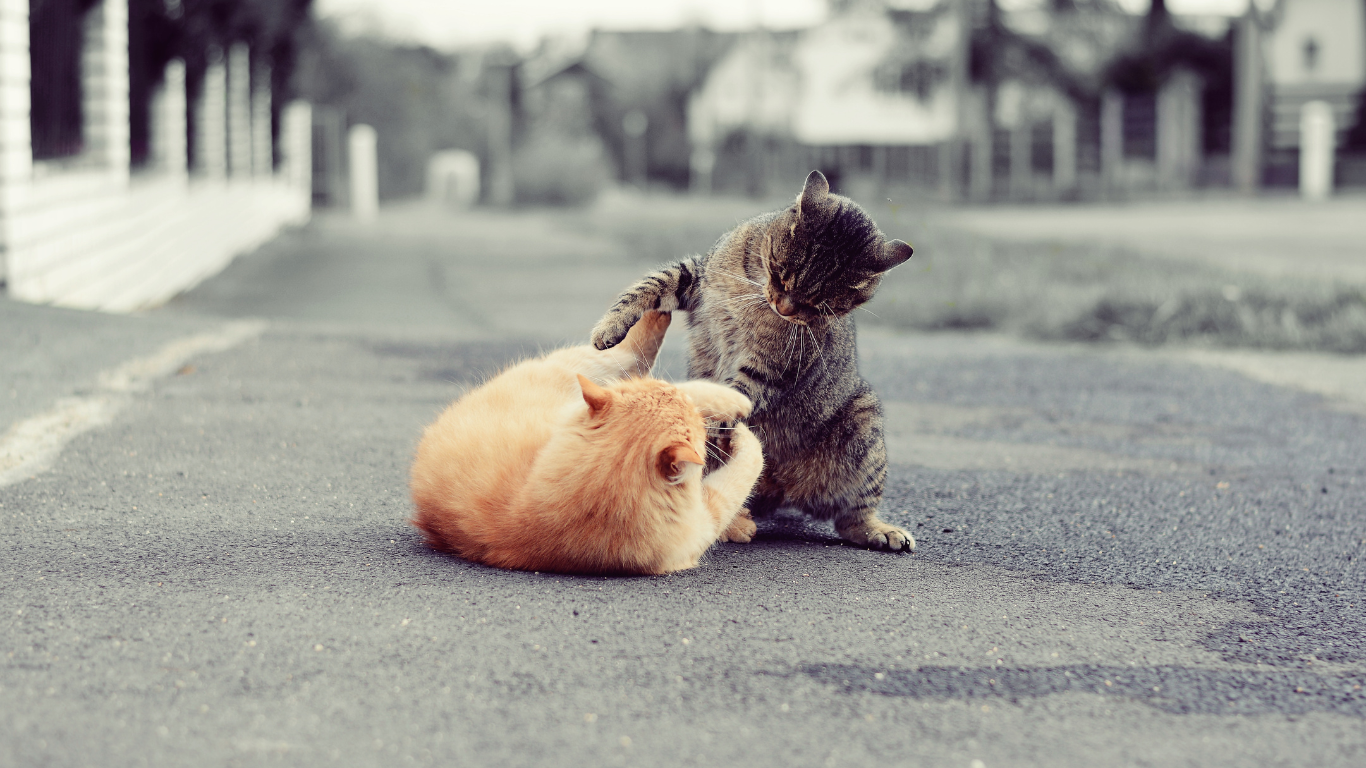Battle of the cats
When cats fight, things can get wild - every cat owner who lives with several four-legged roommates has probably had this experience. The animals' pronounced territorial behavior can become a source of tension. Crossing into someone else's territory quickly becomes a conflict and the territory owner will do everything in his power to drive the intruder away again. Occasional arguments are part of a cat relationship. It serves to consolidate the ranking in the group and usually ends without injuries, but things sometimes look different when your cat encounters strangers on an outdoor run.
Outdoor fights
If your cat is an outdoor cat, there are particular dangers. While you can be sure that the two opponents are vaccinated against common diseases when fighting in the apartment, things are different in “street fights”. Since cats have many germs in their saliva and on their teeth, serious infections can occur after bites and diseases such as feline AIDS (FIV) can be transmitted.
If your cat comes home with wounds after an outing, you should go to the vet.
But your cat's wounds are not always clearly visible - with their long, pointed teeth, they often only leave small injuries after bites, but these can penetrate deep into the flesh. The wound is usually small because the teeth penetrate deeply - the germs can cause inflammation deep down, which develops into an abscess (boil).
Even if a bite goes undetected at first, you will notice abnormalities in your cat. If an infection has developed as a result of a bite, this can be expressed by the following signs:
An infection causes a high fever and cats no longer eat. On closer inspection you can see a small wound that is painfully swollen. Your cat will not allow himself to be touched at this point. The owner often only notices the result of the bite when the cat develops a fever and no longer eats. The vet will then inject an antibiotic and may also have to treat the abscess. Cats are often bitten in the neck area or at the base of the tail, but bite injuries often occur on the legs.
If an argument breaks out in your presence, you shouldn't just try to stand between the two arguing. The risk of injury is also great for humans when two cats attack each other - and a cat bite is also dangerous for us. It's better to quickly find a broom or something similar and gently separate the fighters from each other. Loud noises such as clapping or screaming can also help distract the two from the fight.
One measure to prevent fights between other cats is to have your cat castrated. Neutered cats have smaller territories and lower hormone levels - so there is less potential for aggression and your cat is more likely to avoid trouble. Unneutered male cats in particular get into fights much more often than their neutered counterparts or female cats.
Reasons for fights
Territorial disputes also take place in the home. When one cat violates another's privacy, its claws are quickly extended.
Cats don't like to share and should therefore always have their own resources: their own bowl, their own sleeping basket, a litter box and always enough space to relax alone.
Another reason for fights can actually be jealousy, which is why sharing should always be fair. No cat should be favored or disadvantaged when it comes to treats , petting or play sessions. Don't give the animals reason to be jealous to prevent arguments.
If a cat feels unwell (this can also be caused by another cat), they show their discomfort by urinating in various places in the apartment and rarely go to the litter box - it may even be the case that the owners with urine be marked if the cat feels uncomfortable.
A new roommate can lead to arguments over hierarchy, so the introduction should be gradual, similar to moving a dog into a cat household .
This is how you can tell if things are getting serious
The difference between wild play and real combat can be a fine line and can quickly spiral out of control. A significant increase in volume will show you that fun has become serious. But even before things escalate, cats show this with their body language. Typical signs are:
- Slight hump
- Growling or hissing
- Ears laid back
- Staring at the opponent
- The tail twitches back and forth and is bushy (raised fur!)
- Extended claws
If you recognize these behaviors, it is advisable to separate the two cats from each other first.










